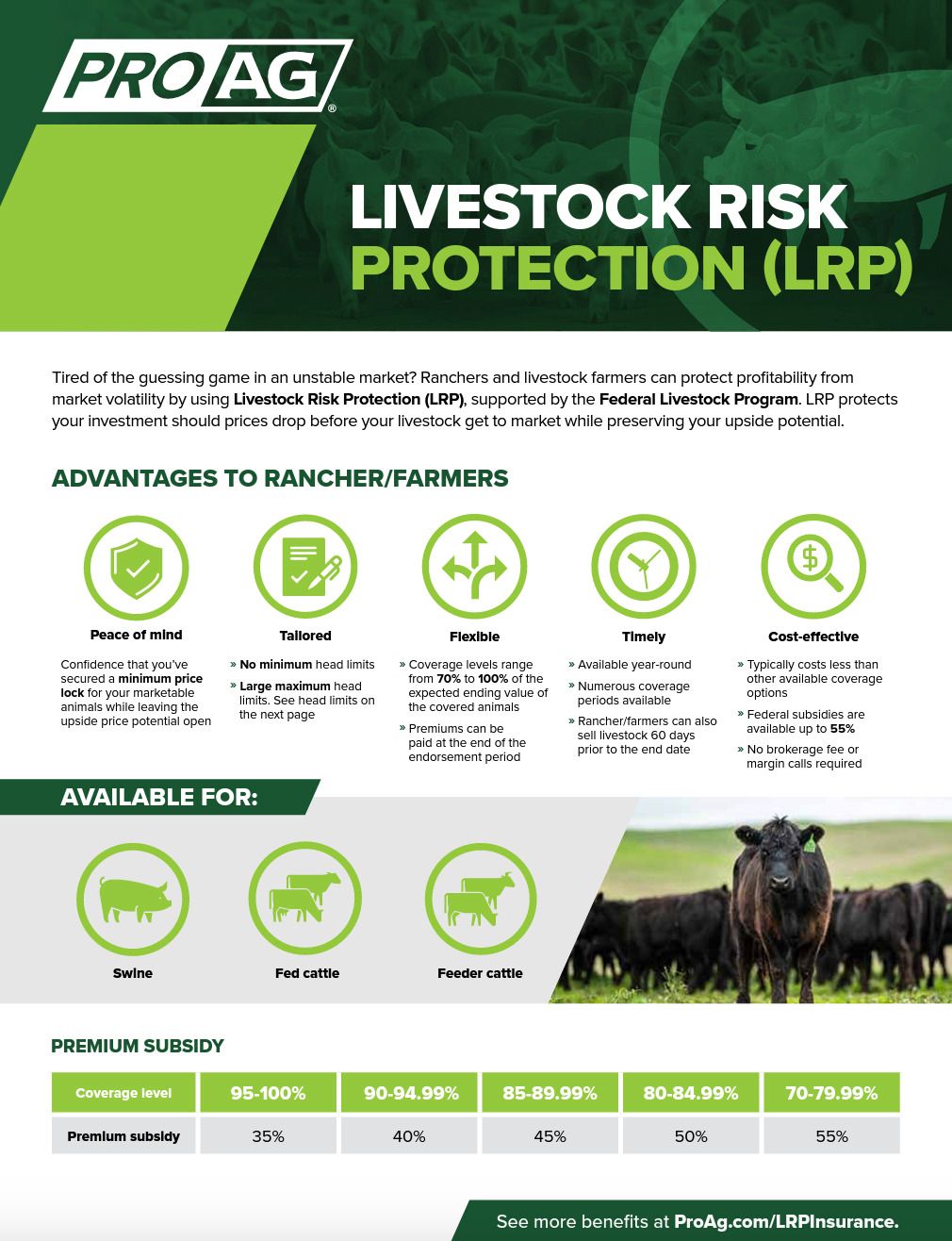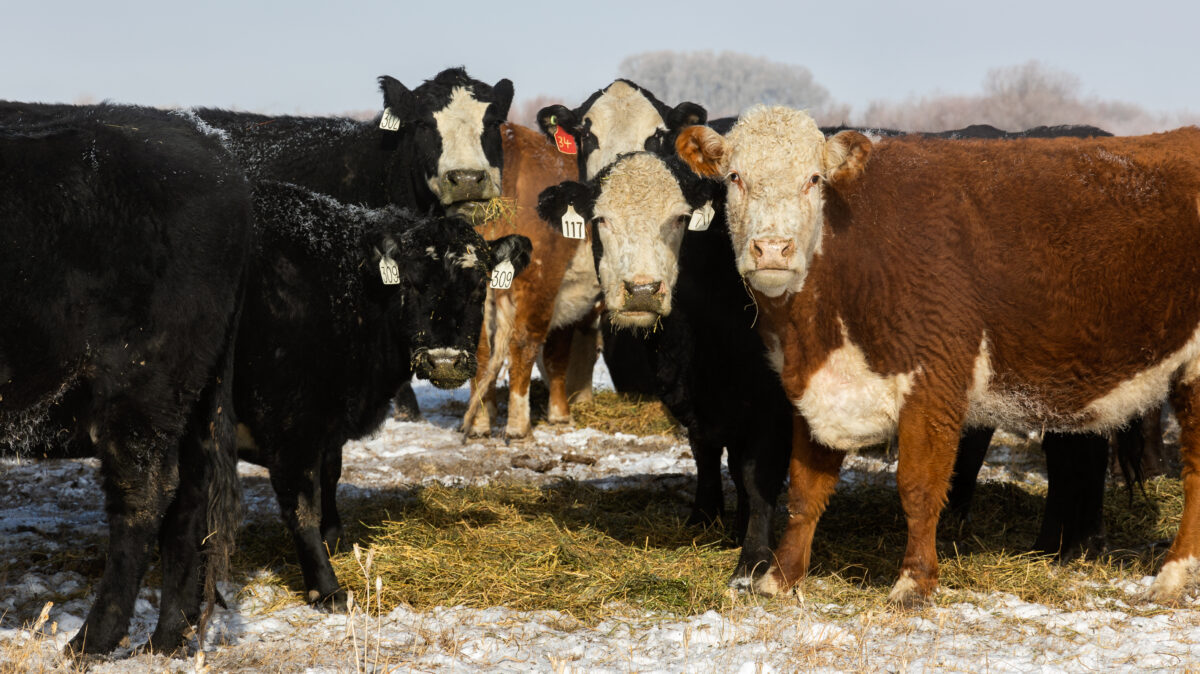Recognizing Animals Danger Security (LRP) Insurance Coverage: A Comprehensive Guide
Browsing the world of animals danger protection (LRP) insurance can be a complicated undertaking for several in the farming sector. This sort of insurance coverage offers a security web against market variations and unforeseen circumstances that might affect livestock manufacturers. By recognizing the complexities of LRP insurance, producers can make informed choices that may secure their operations from financial risks. From exactly how LRP insurance coverage operates to the numerous coverage alternatives available, there is much to reveal in this comprehensive guide that could possibly shape the means livestock producers approach risk monitoring in their companies.

How LRP Insurance Policy Works
Periodically, recognizing the mechanics of Animals Danger Defense (LRP) insurance can be complicated, but damaging down how it works can provide clearness for farmers and ranchers. LRP insurance is a risk management tool developed to shield livestock producers versus unexpected cost decreases. The policy allows manufacturers to establish an insurance coverage degree based on their details requirements, picking the variety of head, weight range, and protection cost. Once the plan remains in area, if market costs drop below the insurance coverage cost, manufacturers can submit a claim for the distinction. It is very important to keep in mind that LRP insurance is not an income warranty; rather, it concentrates only on cost danger defense. The insurance coverage duration commonly varies from 13 to 52 weeks, providing versatility for producers to pick a duration that straightens with their production cycle. By utilizing LRP insurance policy, ranchers and farmers can minimize the monetary threats related to changing market value, making certain better stability in their procedures.
Qualification and Protection Options

When it comes to coverage choices, LRP insurance coverage offers manufacturers the flexibility to choose the coverage degree, protection period, and endorsements that best match their danger management needs. By understanding the qualification standards and coverage alternatives readily available, animals manufacturers can make informed choices to handle risk efficiently.
Advantages And Disadvantages of LRP Insurance
When reviewing Animals Risk Defense (LRP) insurance policy, it is essential for animals manufacturers to evaluate the advantages and disadvantages fundamental in this risk monitoring device.

One of the key benefits of LRP insurance is its capability to offer protection against a decrease in animals costs. This can help secure manufacturers from monetary losses arising from market variations. Additionally, LRP insurance coverage provides a level of adaptability, permitting producers to tailor coverage levels and policy periods to match their certain requirements. By securing in an assured price for their animals, manufacturers can much better take care of danger and prepare for the future.
However, there are likewise some disadvantages to take into consideration. One constraint of LRP insurance coverage is that it does not safeguard against all sorts of threats, such as condition episodes or all-natural catastrophes. Premiums can sometimes be pricey, specifically for manufacturers with large animals check here herds. It is essential for producers to carefully examine their specific danger direct exposure and economic scenario to determine if LRP insurance coverage is the right threat monitoring find more tool for their procedure.
Recognizing LRP Insurance Policy Premiums

Tips for Making Best Use Of LRP Perks
Making the most of the benefits of Animals Risk Defense (LRP) insurance coverage needs strategic planning and positive threat monitoring - Bagley Risk Management. To take advantage of your LRP protection, take into consideration the complying with tips:
Regularly Examine Market Problems: Stay informed about market trends and price fluctuations in the livestock industry. By monitoring these elements, you can make educated decisions about when to acquire LRP coverage to protect versus prospective losses.
Establish Realistic Insurance Coverage Degrees: When choosing coverage levels, consider your production prices, market worth of animals, and possible dangers - Bagley Risk Management. Establishing sensible insurance coverage degrees makes sure that you are appropriately shielded without overpaying home for unneeded insurance
Diversify Your Coverage: Rather of relying entirely on LRP insurance, consider expanding your danger administration techniques. Combining LRP with various other threat administration tools such as futures agreements or choices can give thorough protection versus market unpredictabilities.
Evaluation and Adjust Insurance Coverage Routinely: As market problems change, periodically assess your LRP protection to guarantee it aligns with your existing danger direct exposure. Changing coverage degrees and timing of acquisitions can aid maximize your danger protection approach. By adhering to these tips, you can optimize the benefits of LRP insurance and safeguard your animals operation against unanticipated dangers.
Verdict
To conclude, animals threat defense (LRP) insurance policy is a valuable tool for farmers to take care of the financial threats related to their livestock operations. By understanding how LRP functions, eligibility and protection alternatives, as well as the benefits and drawbacks of this insurance coverage, farmers can make enlightened choices to safeguard their livelihoods. By thoroughly taking into consideration LRP premiums and carrying out strategies to maximize advantages, farmers can reduce prospective losses and make sure the sustainability of their procedures.
Livestock producers interested in obtaining Livestock Danger Defense (LRP) insurance can explore an array of eligibility criteria and coverage options customized to their particular animals procedures.When it comes to insurance coverage choices, LRP insurance coverage supplies manufacturers the versatility to pick the insurance coverage degree, insurance coverage duration, and recommendations that ideal match their risk administration requirements.To understand the details of Animals Risk Defense (LRP) insurance completely, recognizing the elements influencing LRP insurance coverage premiums is critical. LRP insurance policy costs are determined by different elements, consisting of the protection degree picked, the expected rate of livestock at the end of the coverage period, the type of animals being guaranteed, and the length of the protection duration.Evaluation and Adjust Coverage Routinely: As market conditions change, periodically review your LRP insurance coverage to ensure it lines up with your current danger direct exposure.